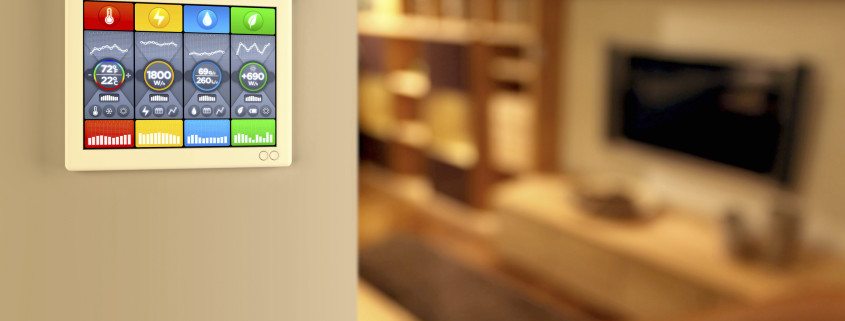Home Appliances For Smart Energy Bills
“Going green” isn’t just good for the environment, it also saves money on utility costs and could also pave your way to getting a significant tax break or deduction if you build, upgrade or buy a house before December 2016. Architects, engineers, contractors and commercial business owners can also benefit from the EPAct tax credits and decrease their overall building expenses.
One way to go green is to look for an ENERGY STAR® certified new house or to find a contractor that will construct your new house to meet the ENERGY STAR specifications and requirements. This refers to meeting the minimum demands regarding the R-factor of the insulation, the U-factor of the windows, creating a completely sealed structure for the least amount of temperature loss, and installing a system that diminishes loss and excess usage.
Central Heating, Ventilation, and Air Conditioning (HVAC) systems or other heating and cooling systems account for a large part of the energy and money savings. According to the U. S. Department of Energy, heating costs could comprise up to 42% of your total energy bill. Energy consumption ratings for furnaces, boilers and water heaters follow the guidelines from the U.S. Department of Energy and are measured against the Annual Fuel Utilization Efficiency (AFUE) scale. Trusted security companies will enable you to control your security equipment, lights, locks, thermostats, and cameras with a single app.
This percentage shows how much energy used by the furnace heats your residence and how much is wasted through the chimney or vent pipe. Searching for an air conditioning unit that has the highest Seasonal Energy Efficiency Rating (SEER) will save you significant costs. So, all you need to do is calling Perth electrical contractors and choose the most economical type of air conditioning system to match your property. This scale measures the amount of cooling air generated versus the amount of electrical energy used. It was developed by the Air Conditioning, Heating, and Refrigeration Institute and is measured in BTUs/watt-hour.
Lighting fixtures and bulbs can also help turn your energy bill into a smart statement. ENERGY STAR certified fixtures and bulbs use only about 25% as much energy as their traditional counterparts. A compact fluorescent light bulb uses between 13 and 15 Watts of electricity but gives off as much light as a typical 60-Watt bulb and can save more than $40 over its lifetime; which will be 10 to 50 times longer than a traditional bulb. ENERGY STAR qualified lighting products are safer because they produce only a quarter of the amount of heat that similar products produce and are validated by Texas home warranty companies for a two-year warranty.
However, upgrading a home appliance with a new ENERGY STAR certified equivalent is the fastest and easiest way to start saving on your utilities. The U. S. Department of Energy estimates that household appliances account for nearly 20% of energy usage in a typical residence. ENERGY STAR qualified machines are also generally of a higher quality, more reliable, more comfortable, and last longer than similar devices without the ENERGY STAR label.
The following types of appliances, all of which you can find reviewed on unclutterer, can be qualified as ENERGY STAR compliant:
- Refrigerators
- Freezers
- Clothes Washers
- Clothes Dryers
- Dishwashers
- Dehumidifiers/Air Purifiers
- Ceiling Fans
- Ventilation Fans
Refrigerators – ENERGY STAR refrigerators are 9-10% more efficient than those meeting minimum federal standards. They can save you between $35 – $300 over a lifetime of the unit. They are quieter, and the doors are better insulated, keeping food fresher for longer periods of time.
Clothes Washers – Qualified clothes washers use 50% less water and 30% less electricity saving approximately $50 a year in utility costs for a typical household. They also feature a gentler operation, better rinsing, and eliminate more water during the spin cycle, which prolongs the life of clothes
Dishwashers – ENERGY STAR certified dishwashers use about 10% less energy than those that are not ENERGY STAR certified. They run quieter and use less water than other dishwashers while cleaning better and offering more options for controlling cycle length, water temperature, and pre-rinsing.
Ceiling Fans – Qualified ceiling fans are 50% more efficient than those that are not ENERGY STAR certified.
Ventilation Fans – Ventilation fans, like those used in bathrooms or part of range hoods, use only 30% as much electricity as non-compliant fans, are quieter and have a longer durability period.
Energy consumption rating for your new home appliance is a major factor in reducing monthly expenditures. Replacing old machines with new ones may be the easiest way to save money on electricity. Many manufacturers of ENERGY STAR compliant devices offer rebates as incentives for choosing to help the environment. Pittsburgh Appliance Repairs repair all models and makes of washers, stoves, dryers, freezers, ovens and refrigerators, heaters, microwaves, and dishwashers in case any of them breaks down.
Also, if you’re planning to go green, Congress has approved the 45L $2,000 tax credit for residences with three or fewer floors and the 179D tax deduction for commercial buildings and residential structures with four or more levels only through the end of December 2016. To take advantage of this tax credit, you must act soon. Contact our experts from Walker Reid Strategies to assist you throughout this entire process and see how you can benefit from these governmental credits.





